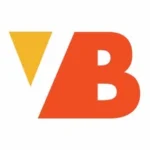Realtime Collage By Kalen Hollomon
Combining the elements of street photography and found imagery, artist Kalen Hollomon assembles real time…
Neoclassicism Transformed By Kevin Francis Gray
Originally from Northern Ireland, artist Kevin Francis Gray subverts classic sculptural conventions of the human…
A Pixelated Wood Installation
&’ Architects (Emmi Keskisarja & Janne Teräsvirta & Company) have created the installation as an…
Clever Street Artist Is Transforming NYC’s Streets into One Giant Playground
We love clever street art, so we couldn't help but admire the work of artist…
Anna Carey’s Miniature Rainbow Interiors
Taking inspiration from properties and interiors located on Google maps, Australian artist Anna Carey constructs…
Tim Eitel’s Studies Of Modern Urban Living
After a first glance at the figures present in Tim Eitel’s oil paintings and lithographs,…
Bertjan Pot’s Jolly Masks
Most of Bertjan Pot’s experiments begin on the impulse of a certain curiosity, working with…
Tara Donovan Transforms Plastic Cups Into A Geomorphic Sculpture
In her site-specific installations, Tara Donovan assembles man-made materials into large sculptural constructions. Originally from…
Joseph Ernst Presents Nothing In the News
Artist and filmmaker Joseph Ernst is concerned with our inability to switch off. Habitual scrolling…
Photographer Stores His Trash For 4 Years And Then Creates A Powerful Photo Series
Back in 2011, photographer Antoine Repessé stopped throwing away his recyclable trash to make a point. Four…






